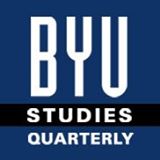BYU Studies Quarterly

Article Title
17 Miracles, directed by T. C. Christensen
Keywords
Mormon studies, film review, faith, trials, Mormon cinema
Abstract
The film 17 Miracles is a recent cinematic depiction of the faith and trials of the Martin and Willie handcart companies. Mormon culture's hallowed treatment of the trek has appeared in oral histories, pageant depictions, and trek reenactments, and writer and director T. C. Christensen's treatment of the subject material is an excellent addition to a robust tradition that remembers a significant moment in our cultural past. That said, the film is not without its flaws. Though the film evidences superb storytelling and adept skill in the narrative language of film, it sometimes meanders away from its own strengths in order to fulfill other cultural or traditional expectations associated with recounting pioneer stories.
While Mormon culture provides multiple ways to hear pioneer stories, there is a pattern to how the stories are told. A "pioneer story" means something different than describing a trek across the plains. Reciting a daily log of a wagon's supply inventories would not be a pioneer story. Tradition and culture shape how we arrange the content of the stories and why we tell the stories. While pioneer stories mention struggles, they relate the struggles with optimistic and hope-inspiring tones. While individuals are mentioned, they are not at the heart of pioneer stories' narrative structure; God and faith are. Pioneer stories tend to be structured as vignettes rather than biographies; in any pioneer story, whom the miracle happens to is less important than the universality of God interceding on behalf of the faithful. For Mormons, there are preexisting understandings of what the tone, structure, and content of a pioneer story should be. Christensen's otherwise excellent film suffers from an imperfect attempt to integrate the traditional idea of a pioneer story with an alternative way of telling pioneer stories.
Recommended Citation
Davis, Allan
(2012)
"17 Miracles, directed by T. C. Christensen,"
BYU Studies Quarterly: Vol. 51:
Iss.
4, Article 15.
Available at:
https://scholarsarchive.byu.edu/byusq/vol51/iss4/15
